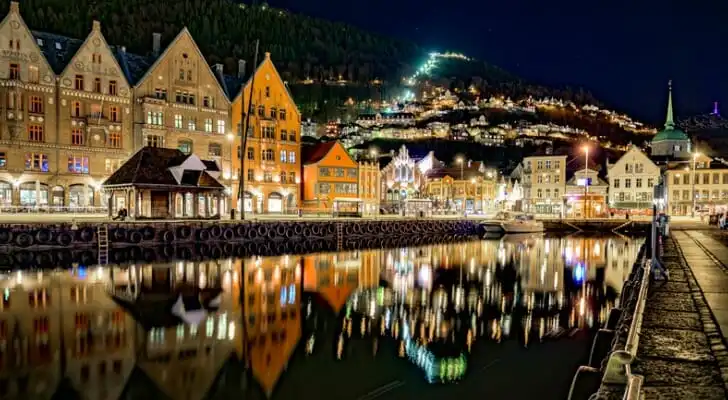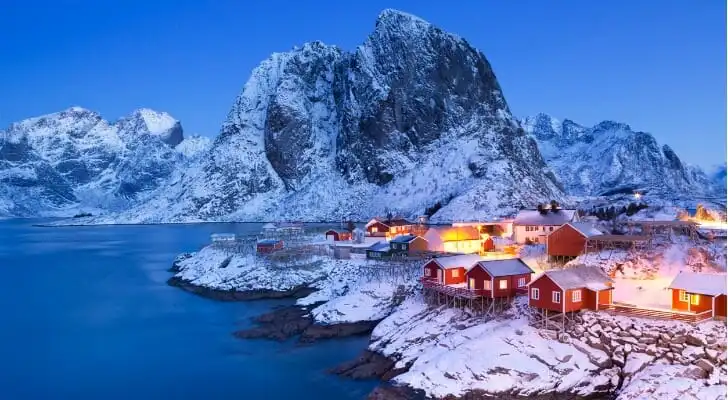 Retiring in Norway offers a unique blend of breathtaking landscapes and exceptional quality of life, though it comes with specific considerations. The Scandinavian nation consistently ranks among the world’s happiest countries, boasting excellent healthcare, clean environments, and remarkable social stability. However, prospective retirees should be prepared for the high cost of living, which includes everything from housing to everyday expenses. Understanding how to retire in Norway requires navigating visa requirements, which differ significantly depending on whether you’re an EU/EEA citizen or coming from elsewhere in the world.
Retiring in Norway offers a unique blend of breathtaking landscapes and exceptional quality of life, though it comes with specific considerations. The Scandinavian nation consistently ranks among the world’s happiest countries, boasting excellent healthcare, clean environments, and remarkable social stability. However, prospective retirees should be prepared for the high cost of living, which includes everything from housing to everyday expenses. Understanding how to retire in Norway requires navigating visa requirements, which differ significantly depending on whether you’re an EU/EEA citizen or coming from elsewhere in the world.
Before making the big move, you may want to ensure your finances are in order with the help of a financial advisor.
Cost of Living and Housing in Norway
According to Numbeo, the cost of living in Norway is about 17% higher on average than in the U.S., not including rent, although rental prices are about 55% lower than in the U.S. If you plan to live exclusively off your Social Security retirement benefit, it will be challenging to do so in Norway.
Purchasing a home in Norway is significantly more expensive than in the U.S. The average price per square foot to purchase an apartment in the U.S. in a city center is about $300, but to purchase in a city center in Norway costs an average of $672 per square foot. Therefore, your dollar will go much further if you choose to rent in Norway rather than buy, where the country is about $500 more affordable per month than the United States.
Norway Visas
Unlike some European countries, Norway does not have a retirement permit or retirement visa available. Therefore, to live in Norway without a work permit, a person must have a permanent residence and enough money to sustain themselves.
Although there is no retirement visa, Norway does grant citizenship and permanent residence visas. To obtain permanent residence, a person must meet several criteria, including an annual income of at least NOK 191,422, or about $21,300. Applicants must also learn Norwegian and pass the relevant tests. Be sure to investigate the Royal Norwegian Embassy’s website to learn more about applying for permanent residency.
Healthcare in Norway
 Healthcare in Norway is free for permanent residents and citizens. To obtain a health card, residents and citizens simply order it online. They will need to show proof of their citizenship or permanent residency by providing their Norwegian ID number to order a card.
Healthcare in Norway is free for permanent residents and citizens. To obtain a health card, residents and citizens simply order it online. They will need to show proof of their citizenship or permanent residency by providing their Norwegian ID number to order a card.
Each resident or citizen pays taxes, which cover healthcare costs through the National Insurance Scheme. Each adult must also pay a deductible each year before becoming eligible for an exemption card, but the out-of-pocket cost per person is around $724.
All Norwegians and Norwegian residents have access to quality care regardless of their social or economic status. Primary, preventative and nursing care are all organized locally, and the local governments organize initiatives and campaigns to promote healthy lifestyles.
Norway Taxes
It is well known that taxes in Norway are high. However, the taxes that people pay contribute to national healthcare, infrastructure and more. While Norwegian residents pay taxes on the income they earn worldwide, retirees living in Norway only pay taxes on the income they earn within Norway.
Therefore, if you earn an income in Norway, the income tax is 22%, and a progressive tax bracket is in place for people who earn more than about $21,196 per year, with percentages between 1.7% and 17.7%
Norway Safety
Norway is one of the safest nations in the world. And it has been getting safer in recent years. According to one gauge, it is as safe as Switzerland. The country compares favorably with the U.S., which, one study found, has a total crime rate 36 times higher than Norway’s. It is even safer compared to its Scandinavian neighbors.
Since 2002, its murder rate is estimated to be half that of Sweden’s. Such crime as does occur is mostly in the capital of Oslo, and the overwhelming majority of these offenses are property crimes like theft. Still, even property crimes are uncommon, which may, in part, account for many people’s practice of leaving their bicycles outside unlocked.
Bottom Line
 Learning how to retire in Norway opens the door to a peaceful life in one of the world’s most beautiful and socially progressive countries. While the cost of living is undeniably high, the exceptional quality of life, comprehensive healthcare system, and breathtaking natural landscapes make it a worthwhile consideration for retirees with adequate financial resources. The retirement visa process requires careful planning and documentation, but for those who qualify, the benefits are substantial. Whether you’re drawn to the fjords, the northern lights or simply the calm, orderly Norwegian lifestyle, proper preparation is essential.
Learning how to retire in Norway opens the door to a peaceful life in one of the world’s most beautiful and socially progressive countries. While the cost of living is undeniably high, the exceptional quality of life, comprehensive healthcare system, and breathtaking natural landscapes make it a worthwhile consideration for retirees with adequate financial resources. The retirement visa process requires careful planning and documentation, but for those who qualify, the benefits are substantial. Whether you’re drawn to the fjords, the northern lights or simply the calm, orderly Norwegian lifestyle, proper preparation is essential.
Tips on Retiring
- As you explore possible places to retire, consider talking to a financial advisor to help you sort through the costs of various options and which options you can afford. Finding a financial advisor doesn’t have to be hard. SmartAsset’s free tool matches you with vetted financial advisors who serve your area, and you can have a free introductory call with your advisor matches to decide which one you feel is right for you. If you’re ready to find an advisor who can help you achieve your financial goals, get started now.
- Part of sorting through your ability to afford retirement locations is knowing what your monthly Social Security check will be. A Social Security calculator will give you a pretty good estimate.
Photo credit: ©iStock.com/Eachat, ©iStock.com/CHUNYIP WONG, ©iStock.com/TK\sara_winter